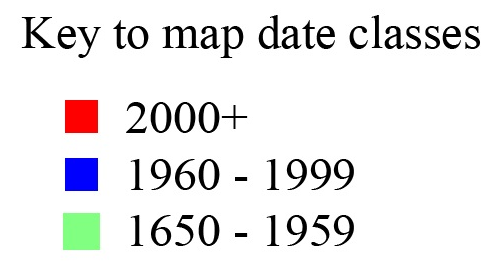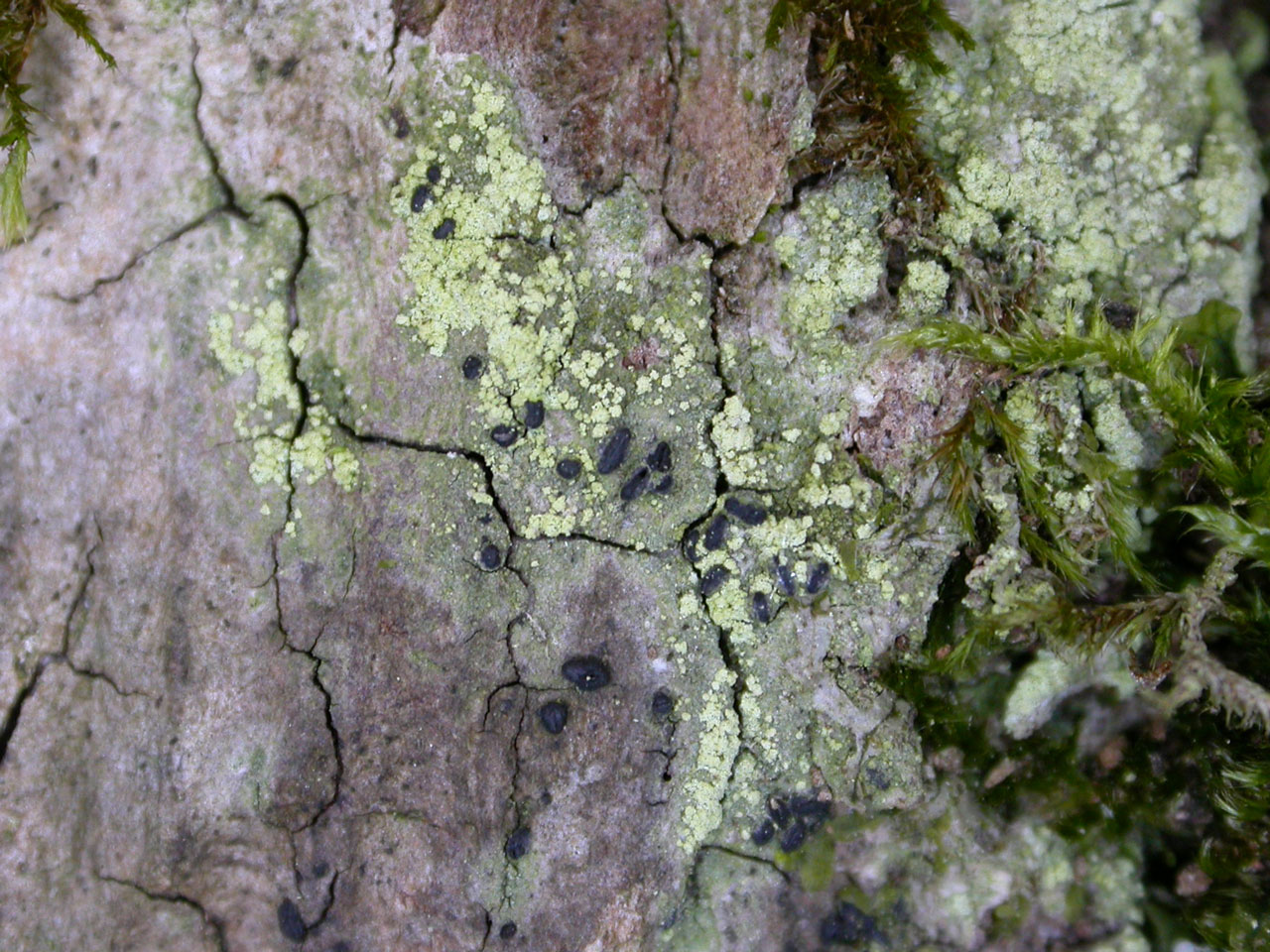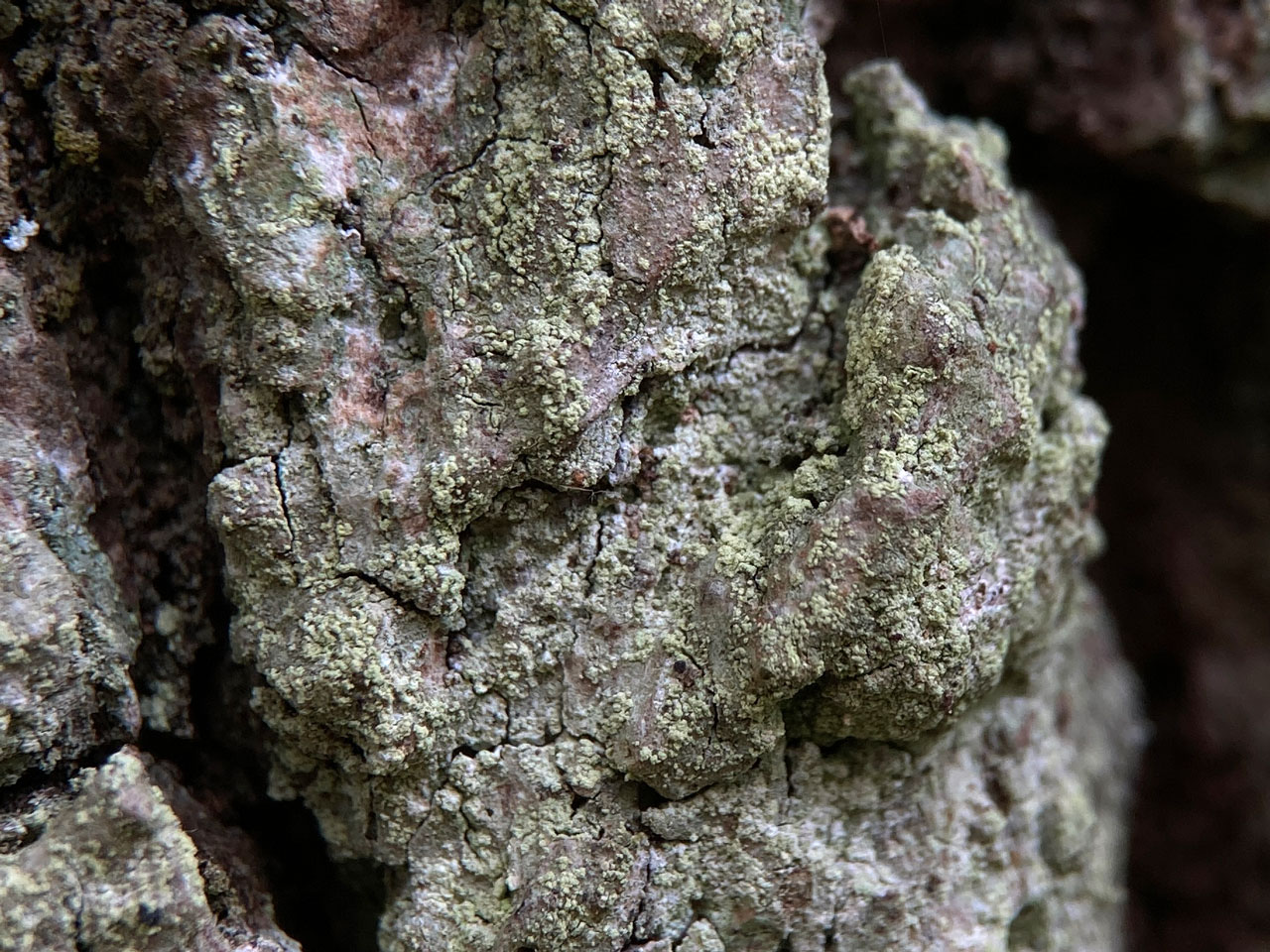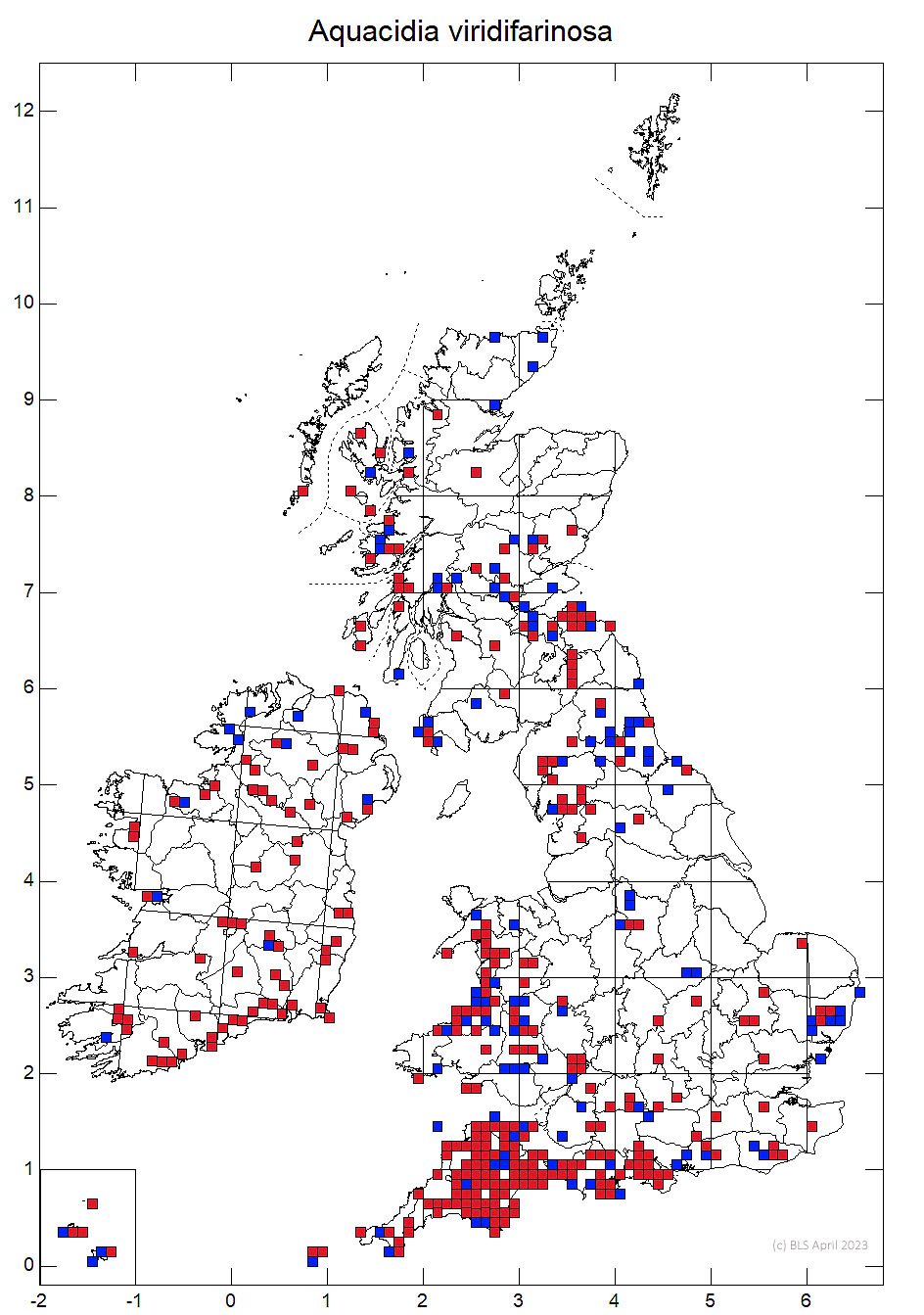This lichen forms green sorediate crusts in shady base rich bark and rocks. Its presence is usually best confirmed by its bright orange UV fluorescence. Common in the south west but more scattered beyond.
Like A. antricola in characters of the pycnidia (when present), conidia, photobiont and chemistry including the UV+ reaction. Differing in the effuse, irregular, often confluent patches of yellow-green, farinose soredia 10–30 (–40) µm diam. on the grey-green thallus and less frequent pycnidia that are 0.15–0.26 mm diam. Apothecia very rare in Britain and Ireland, pale orange, becoming convex, the margin paler; epithecium very pale yellow; hypothecium pale yellow; ascospores fusiform-acicular, 6- to 8-septate, 33–44 × 3–4 µm. Thallus UV+ orange: xanthones (coronatone), ± zeorin.
Considered as a sorediate counterpart of A. antricola by Aptroot et al. (2018), but molecular data are not available to confirm this. In the rare fertile thalli, soredia are suppressed by apothecia but appear at the edges of the thallus. The UV+ orange fluorescence separates this lichen from Mycobilimbia epixanthoides, which can grow with A. viridifarinosa in old woodlands.
On shaded dry, but periodically flushed, higher pH bark of mature deciduous trees, especially Oak and Elm, in humid woodlands and hedgerow trees, also on shaded siliceous or slightly basic rock-faces, old walls and monuments.

Frequent, throughout Britain and Ireland, but commonest in the south west and probably recolonising into central England with the decline in acidifying pollution.
Cannon, P., Orange, A., Aptroot, A., Sanderson, N., Coppins, B. & Simkin, J. (2022). Lecanorales: Pilocarpaceae, including the genera Aquacidia, Byssoloma, Fellhanera, Fellhaneropsis, Leimonis and Micarea. Revisions of British and Irish Lichens 27: 1-48.
Text by Neil A Sanderson based on Canon et al (2022).


